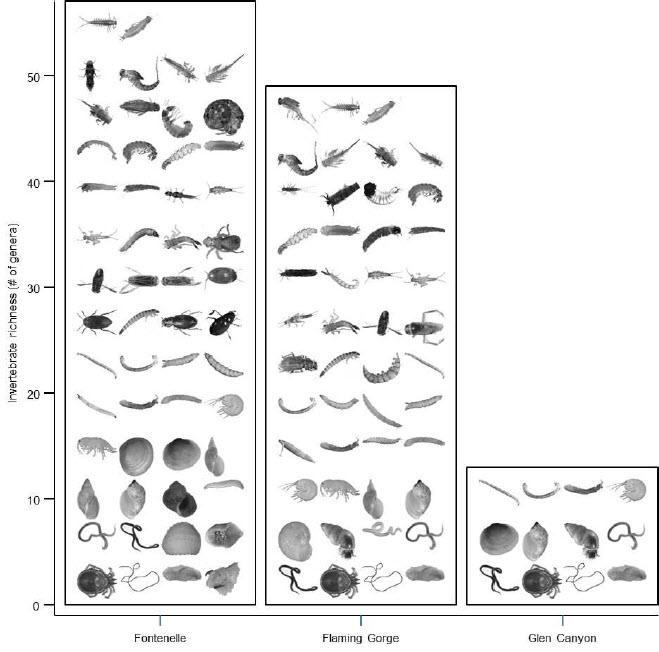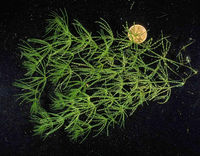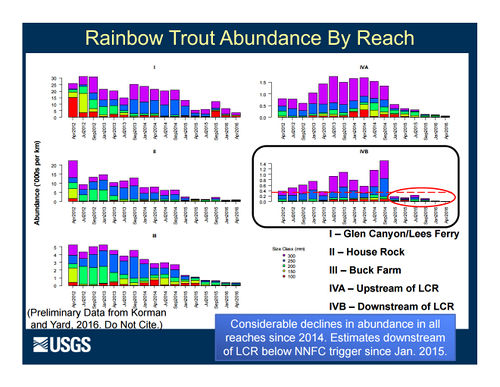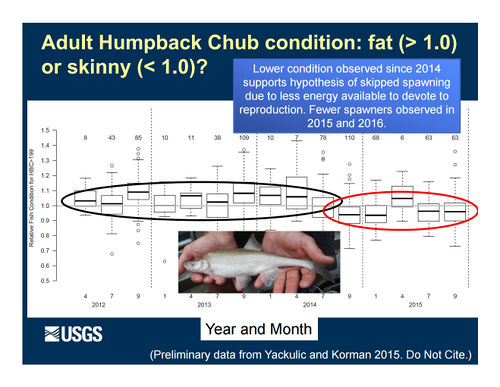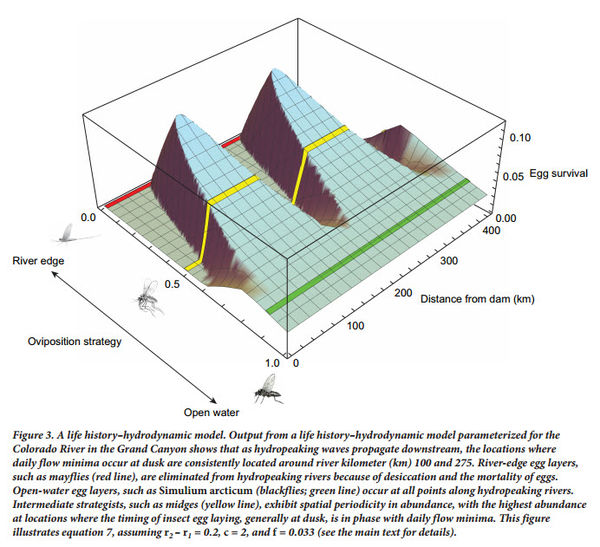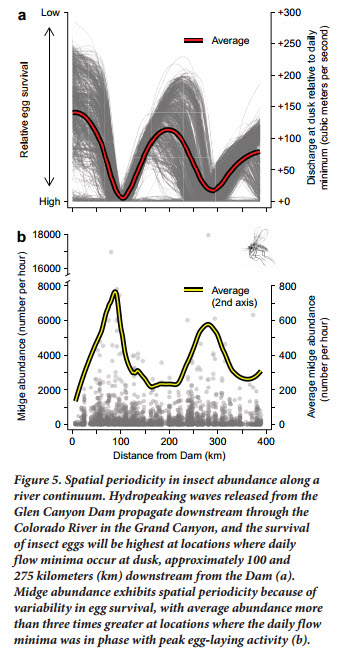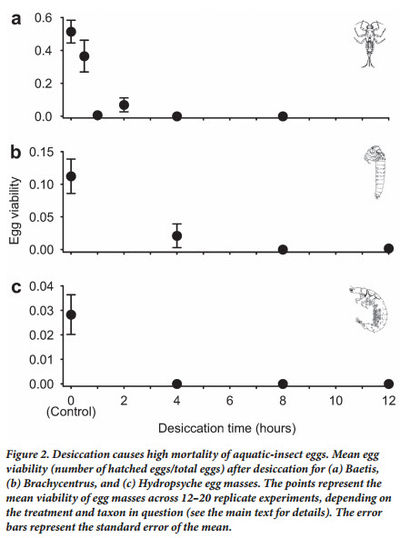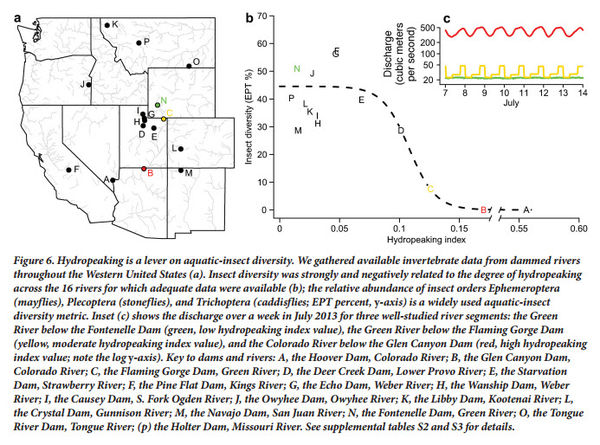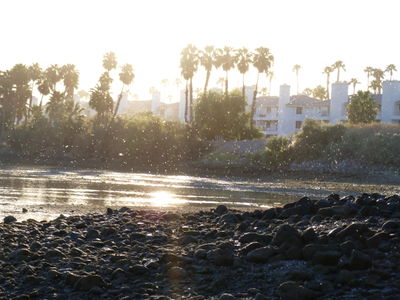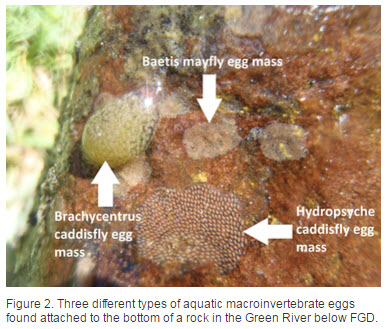Difference between revisions of "FOOD BASE"
Cellsworth (Talk | contribs) |
Cellsworth (Talk | contribs) |
||
| Line 58: | Line 58: | ||
[[File:DesiccationMortality.jpg|400px]] | [[File:DesiccationMortality.jpg|400px]] | ||
[[File:EPTdiversityHydropeaking.jpg|600px]] <br> | [[File:EPTdiversityHydropeaking.jpg|600px]] <br> | ||
| − | |||
| − | |||
| − | |||
| − | |||
| − | |||
| − | |||
|} | |} | ||
| Line 98: | Line 92: | ||
*[http://www.usu.edu/buglab/Projects/CurrentProjects/#item=123 Macroinvertebrate Oviposition (egg-laying) Habitat Preferences on the Green River below Flaming Gorge Dam] | *[http://www.usu.edu/buglab/Projects/CurrentProjects/#item=123 Macroinvertebrate Oviposition (egg-laying) Habitat Preferences on the Green River below Flaming Gorge Dam] | ||
| − | [ | + | [http://gcdamp.com/index.php?title=Foodwebs_and_Bioenergetics '''Foodwebs and Bioenergetics'''] |
Drift and Food Availability | Drift and Food Availability | ||
| Line 138: | Line 132: | ||
*[http://www.usbr.gov/uc/rm/amp/twg/mtgs/14jan30/Attach_05a.pdf Foodbase Enhancement Suggestions from Federation of Fly Fishers] | *[http://www.usbr.gov/uc/rm/amp/twg/mtgs/14jan30/Attach_05a.pdf Foodbase Enhancement Suggestions from Federation of Fly Fishers] | ||
*[http://www.usbr.gov/uc/rm/amp/twg/mtgs/14jan30/Attach_05b.pdf Foodbase Findings] | *[http://www.usbr.gov/uc/rm/amp/twg/mtgs/14jan30/Attach_05b.pdf Foodbase Findings] | ||
| − | |||
| − | |||
| − | |||
| − | |||
*[http://www.usbr.gov/uc/rm/amp/twg/mtgs/14jan30/AR_Melis_Low_Flows.pdf Low flows in Glen Canyon: preliminary geomorphic analysis of the potential effects on fish and food base (Melis)] | *[http://www.usbr.gov/uc/rm/amp/twg/mtgs/14jan30/AR_Melis_Low_Flows.pdf Low flows in Glen Canyon: preliminary geomorphic analysis of the potential effects on fish and food base (Melis)] | ||
| Line 147: | Line 137: | ||
*[[Media:Miller and Judson-2013-DriftAndHydropeaking.pdf| Miller and Judson. 2013. Responses of macroinvertebrate drift, benthic assemblages, and trout foraging to hydropeaking. Can. J. Fish. Aquat. Sci. 71: 675–687]] | *[[Media:Miller and Judson-2013-DriftAndHydropeaking.pdf| Miller and Judson. 2013. Responses of macroinvertebrate drift, benthic assemblages, and trout foraging to hydropeaking. Can. J. Fish. Aquat. Sci. 71: 675–687]] | ||
*[http://www.usbr.gov/uc/rm/amp/twg/mtgs/13nov06/Attach_02a.pdf GCMRC Update - Status of Resources and Sediment Conditions] | *[http://www.usbr.gov/uc/rm/amp/twg/mtgs/13nov06/Attach_02a.pdf GCMRC Update - Status of Resources and Sediment Conditions] | ||
| − | |||
| − | |||
| − | |||
*[http://www.gcmrc.gov/about/foodbase/WellardKelley_et%20al.%202013.pdf Macroinvertebrate diets reflect tributary inputs and turbidity-driven changes in food availability in the Colorado River downstream of Glen Canyon Dam] | *[http://www.gcmrc.gov/about/foodbase/WellardKelley_et%20al.%202013.pdf Macroinvertebrate diets reflect tributary inputs and turbidity-driven changes in food availability in the Colorado River downstream of Glen Canyon Dam] | ||
*[http://www.gcmrc.gov/about/foodbase/Kennedy%20et%20al.%20FWB%20proofs.pdf Kennedy et al. 2013. The relation between invertebrate drift and two primary controls, discharge and benthic densities, in a large regulated river] | *[http://www.gcmrc.gov/about/foodbase/Kennedy%20et%20al.%20FWB%20proofs.pdf Kennedy et al. 2013. The relation between invertebrate drift and two primary controls, discharge and benthic densities, in a large regulated river] | ||
Revision as of 12:03, 27 March 2017
|
|
The Aquatic Food Base below Glen Canyon DamThe Colorado River below Glen Canyon Dam has been altered by dam-induced modifications to the river’s flow, temperature, and sediment supply. Nonnative species have also changed the natural system. Nonnative fish are thought to prey on and compete with native fish, including the endangered humpback chub (Gila cypha). These impacts have likely changed both the amount and sources of energy that fuel the aquatic food web and the flows of energy within the food web. Installation of the dam created a relatively clear, cool aquatic environment below the dam that now allows aquatic plants to capture the sun’s energy, and they in turn are now consumed by a few species, including scuds (Gammarus lacustris), midges (Family: Chironomidae), blackflies (Simulium arcticum), and New Zealand mudsnails (Potamopyrgus antipodarum). The first three species can provide food for both native and nonnative fishes, but fish cannot digest the New Zealand mudsnail. Desired Future Condition for the Aquatic Food BaseThe aquatic food base will sustainably support viable populations of desired species at all trophic levels. Assure that an adequate, diverse, productive aquatic foodbase exists for fish and other aquatic and terrestrial species that depend on those food resources. |
| EPT as Biologic Indicators of Stream Condition |
Algae and Aquatic Macrophytes |
Aquatic Macroinvertebrates |
|---|
